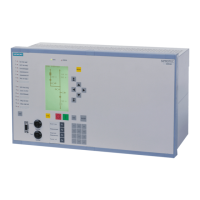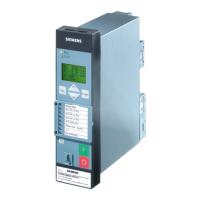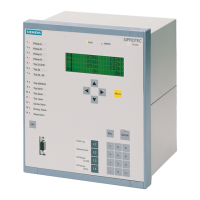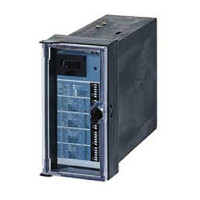[prinzip-ausloesekreisueberwachung-2-binein-150502-kn, 1, en_US]
Figure 2-76
Principle of the trip circuit supervision with two binary inputs
Supervision with two binary inputs not only detects interruptions in the trip circuit and loss of control voltage,
it also supervises the response of the circuit breaker using the position of the circuit breaker auxiliary contacts.
Depending on the conditions of the trip contact and the circuit breaker, the binary inputs are activated (logical
condition "H" in Table 2-13), or not activated (logical condition "L").
In healthy trip circuits the condition that both binary inputs are not actuated (”L") is only possible during a
short transition period (trip contact is closed but the circuit breaker has not yet opened). A continuous state of
this condition is only possible when the trip circuit has been interrupted, a short-circuit exists in the trip circuit,
a loss of battery voltage occurs, or malfunctions occur with the circuit breaker mechanism. Therefore, it is
used as supervision criterion.
Table 2-13
Condition table for binary inputs, depending on RTC and CB position
No. Trip contact Circuit breaker 52a Contact 52b Contact BI 1 BI 2
1 Open Closed Closed Open H L
2 Open Open Open Closed H H
3 Closed Closed Closed Open L L
4 Closed Open Open Closed L H
The conditions of the two binary inputs are checked periodically. A check takes place about every 600 ms. If
three consecutive conditional checks detect an abnormality (after 1.8 s), an annunciation is reported (see
Figure 2-77). The repeated measurements determine the delay of the alarm message and avoid that an alarm
is output during short transition periods. After the malfunction in the trip circuit is cleared, the fault annuncia-
tion is reset automatically after the same time period.
Functions
2.12 Monitoring Functions
194 SIPROTEC 4, 7SJ62/64, Manual
C53000-G1140-C207-8, Edition 08.2016

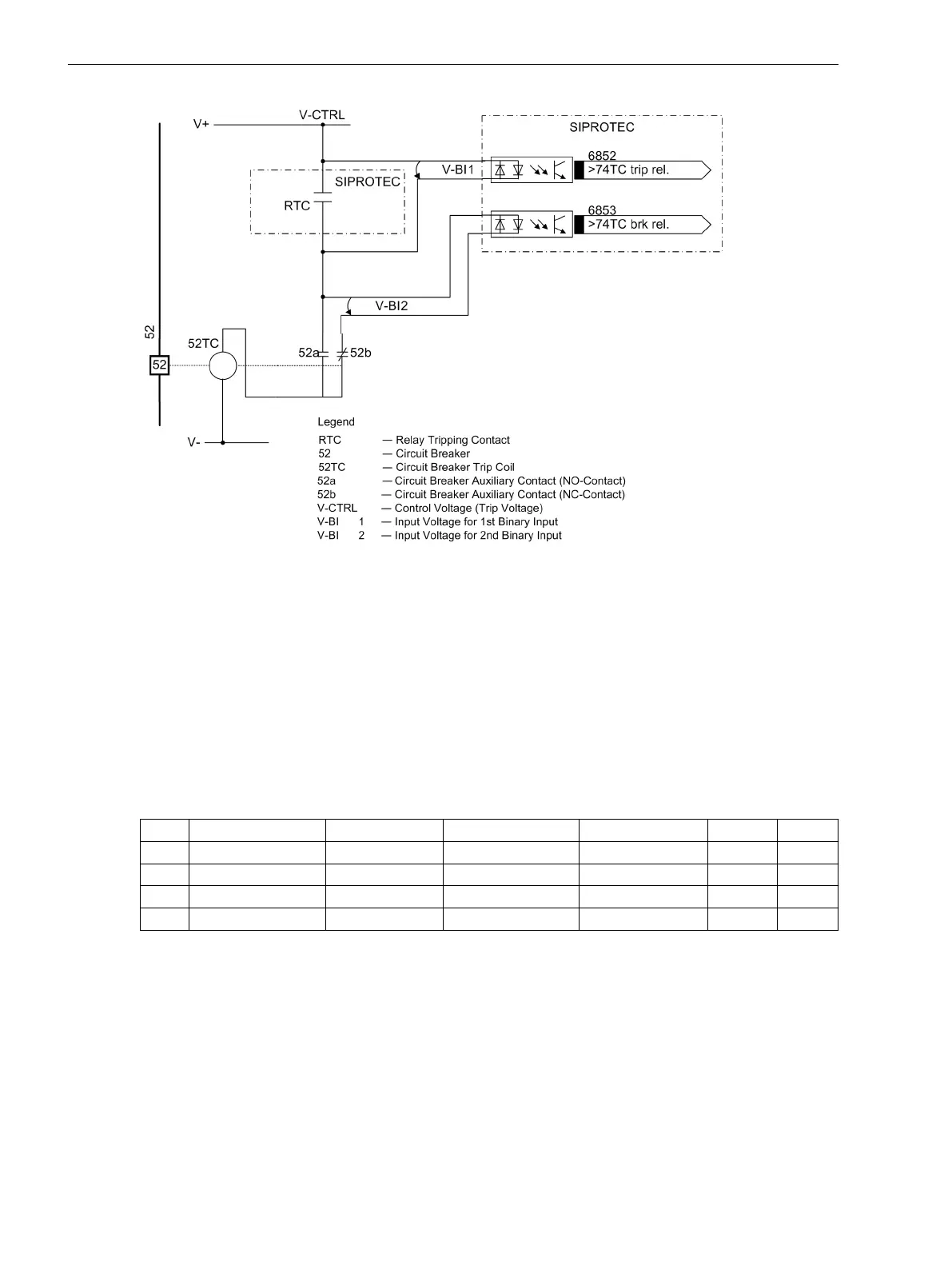